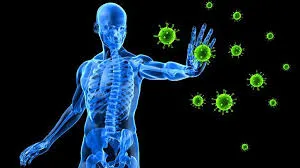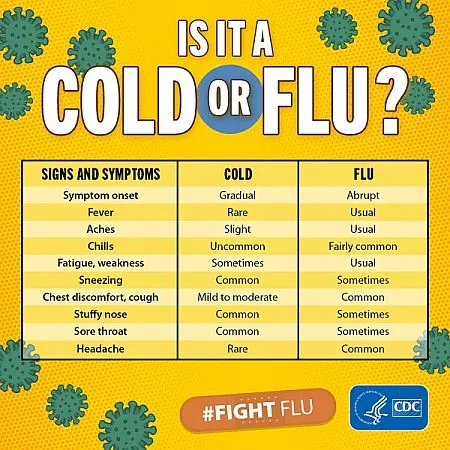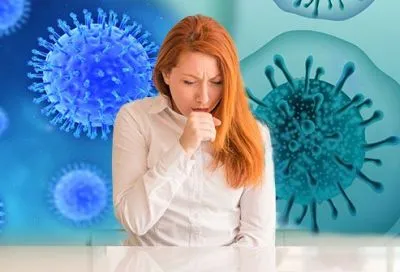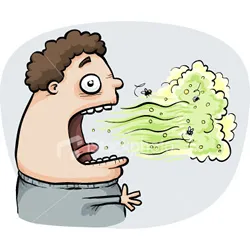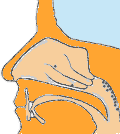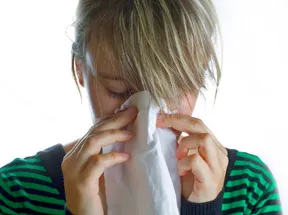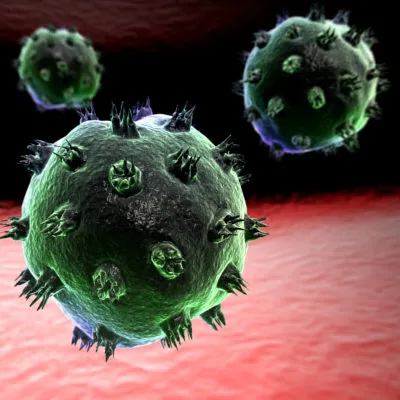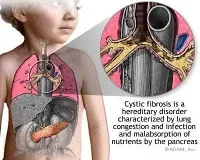Ionic Siver and Nebuliser ComboNZ$337.00Approx USD$203.60
The cold is believed to be the most common illness in the world.
When someone says, "I have a cold," what he or she means is, "There is something in my body that is causing me to have the set of symptoms that we call a 'cold.'" The set of symptoms normally includes things like a runny nose, sneezing, coughing, "chills" and a headache. It does not include a fever -- normally, if there is a fever it's called "the flu."
There are many different viruses that can cause flu symptoms, but about half of the time flu's is caused by a class of viruses called Coronavirus
The viruses are spread by tiny droplets in the air (such as from a cough or sneeze) or from direct contact (especially handshaking Shopping carts and playgrounds). Infected people can spread the virus from 7-9 days before they even have symptoms to many days after the symptoms start.. There are over 100 viruses that can cause the flu, an infection of the upper respiratory tract. It is estimated that healthy adults get an average of two doses per year. Children generally get many more because their immune systems are immature, and because they haven't yet developed immunity to many of the viruses that cause flus and colds. If an adult gets them often, it may be a sign that his or immune system is not working properly.
Flu viruses (coronavirus) infect only a relatively small proportion of the cells lining the nose. Membrane damage is mild. Flu symptoms are due mainly to the body's response to the infection. When a nasal cell is infected by a virus, the body responds by activating parts of the immune system and some nervous system reflexes. The immune system contains a variety of natural substances called inflammatory mediators. Inflammatory mediators help protect the body from infection and other harmful events. Some inflammatory mediators are released when nasal cells are infected by a virus. The names of some inflammatory mediators involved include histamine, kinins, interleukins, and the prostaglandins.
The Caronavirus gets into the cells lining your nose and starts reproducing. It arrives from other people -- it is not cold weather that causes it, but the fact that cold weather causes people to congregate together indoors, which makes transmission of the virus easier. The virus generally moves from someone else's hands to your hands (either directly or through some intermediate surface like a door knob), and from your hands into your nose or eyes.
Occasionally the flu can lead to a more serious illness, such as bronchitis, pneumonia,etc. Acute bacterial sinusitis complicates in both adults and children. From a 1-5 percent of flu's have this complication. The major causes of acute bacterial sinusitis are the bacteria called pneumococcus, hemophilus influnza, Moraxella, other streptococcus species, and staphylococcus.
40,000 to 50,000 Americans will die from Streptococcus pneumoniae each year. And it's not the drug resistant strain that's doing the killing. It's the regular strain. This disease can manifest in many ways. It can cause middle ear infection in children besides causing death in older persons. It's responsible for half the visits to pediatricians each year. It is the major cause of middle ear infections in children. It's also a major cause of death in older persons.
Staphylococcus aureus is another disease that is taking over the hospitals in America. There are many strains and some are drug resistant to almost all antibiotics. There is apparently only one antibiotic left that works, Vancomycin. When that one quits working, what will be left to the doctors arsenal? Not much. Another strong antibiotic is Methycillin. Staph is now becoming resistant to it and is called MRSA (Methicillin Resistant Staphylococcus Aureas).
SYMPTOMS Flu's usually strike 18 to 24 hours after the virus enters the body. There is often confusion between the symptoms of the common cold, influnza, and allergies. Influnza is also a viral respiratory infection but caused by different types of virus, is by far the most serious complaint of the 3 can lead to life-threatening complications, particularly in older or frail people. The most common symptoms are: Head congestion. Warning Congestion, cough, and/or sore throat are signs of a cold, but if these symptoms occur together with fever or fatigue, you may have the flu. If congestion develops in the chest, it is best to consult a health care provider, as chest (lung) infections can be serious. Also contact your health care provider if your fever goes above 102°F for more than 3 days, if yellow or white spots appear in the throat, if the lymph nodes under the jaw and in the neck become enlarged, and/or if chills and shortness of breath occur. Some Facts
PREVENTION Wash your hands often. Nasal secretions containing flu viruses contaminate the hands of people with flu's as a result of nose blowing, covering sneezes, and touching the nose. Flu viruses can survive for several hours on hands, tissues, or hard surfaces. A healthy person can contract the virus by touching a contaminated surface, then touching his or her own mouth or nose. Virus on the fingers can also be transferred into the eye in a finger-to-eye contact. Virus deposited in the eye promptly goes down the tear duct into the nose. Once in the nose, a virus is transported by mucociliary action to the adenoid area where it starts the flu.
You'll probably be surprised to learn that prior to World War II, the most powerful antibiotic, antibacterial and anti fungal substance was silver! Yes, the same kind of silver that your jewelry or silverware is made from, but it was ground up into small particles and suspended in a fluid. It is called colloidal silver (CS). It was doctors' most useful potion because it killed over 650 different illness causing organisms bacteria, viruses and fungi. Rest to allow your body to fight off the virus.'
Richard Davies and Samuel Etris of The Silver Institute, in a 1996 monograph entitled The Development and Functions of Silver in Water Purification and Disease Control, discuss three mechanisms of deactivation that silver utilizes to incapacitate disease causing organisms. They are Catalytic Oxidation, Reaction with Cell Membranes, and Binding with the DNA of disease organisms to prevent unwinding
Don't smoke, and avoid secondhand smoke. Studies by C.L. Fox and S.M. Modak with Pseudomonas aeruginosa, a tenacious bacteria that is difficult to treat, demonstrated that as much as 12% of silver is taken up by the organism's DNA. While it remains unclear exactly how the silver binds to the DNA without destroying the hydrogen bonds holding the lattice together, it nevertheless prevents the DNA from unwinding, an essential step for cellular replication to occur.
Drink plenty of fluids In 1988, colloidal silver was tested at the UCLA Medical Laboratory.The UCLA report stated that " The silver solutions were antibacterial for concentrations of 1 million organisms per ml of Streptococcus pyogenes, Staphylococcus aureus [which in now resistant to Vancomycin, the strongest pharmaceutical antibiotic available] , Neisseria gonorrhea, Gardnerella Vaginalis, Salmonella Typhi [responsible for salmonella food poisoning and Typhus], and other enteric pathogens; and fungicidal for Candida albicans [the common yeast infection, in vaginitis and Chronic Fatigue Syndrome], Candida globata, and M. Furfur."
Dr Robert Becker, M.D., author of The Body Electric and Crosscurrents found that silver caused cells to dedifferentiate and re-differentiate in the process of regenerative healing. " What we had actually done was rediscovered the fact that silver killed bacteria, which had been known for centuries...when antibiotics were discovered, clinical uses for silver as an antibiotic were discarded." Becker said in a 1995 interview with Bio/Tech News. Dr Becker conducted extensive research into the healing properties of silver for many years at the Upstate Medical Center, Syracuse University, Syracuse, New York. The experiments concluded that silver works on a wide range of bacteria, without any known side effects or damage to the cells of the body. Becker discovered that the silver was doing something more than just killing disease causing organisms: He said it was also causing major growth stimulation of injured tissues. Dr. Becker concluded that the presence of the silver ions may help to regenerate tissue, eliminate old or cancerous cells, and other diseased or abnormal tissue conditions.
Dr. Bjorn Nordenstrom, of the Larolinska Institute, Sweden, has successfully used silver as a component in his cancer treatments for many years. Dr. Leonard Keene Hirschberg, A. M., M. D. (John Hopkins) states, "Speaking generally, the colloidal metals are especially remarkable for their beneficial action in infective states." Dr. Richard L. Davies, executive director of the Silver Institute, which monitors silver technology in 37 countries, reports: "In four years we've described 87 important new medical uses for silver. We're just beginning to see to what extent silver can relieve suffering." Tests conducted last year at Temple University School of Medicine in Philadelphia found that silver colloid slowed the replication of HIV-1 (human immunodeficiency virus type 1) and the bacteria that causes yeast infections--at least in a laboratory setting, Scientists at the National Institutes of Health Rocky Mountain Institute in Hamilton, Mont., also found that colloidal silver was effective against Lyme disease bacteria in the lab.
Dr. Harry Margraf, a biochemist and pioneering silver researcher, of Washington’s University Dept of Surgery stated in the 1970’s, “Silver is the best all-around germ fighter we have.” According to Natural Health, “colloidal silver works by disabling the oxygen metabolism enzyme of a bacteria or virus, thereby suffocating and killing it. Since its mechanism of action is directed at the microorganism itself, no tissue cell enzymes are destroyed. Silver does not form toxic compounds or react with anything other than a germ’s oxygen metabolizing enzyme, thereby making it a safe, natural remedy. Resistant strains fail to develop and the body does not develop a tolerance.
Finally, Peter Lindemann reports in his 1997 article, Colloidal Silver, A Closer Look that a study conducted in part by the Institute of Microbiology in Rome, Italy and published in Applied and Environmental Microbiology (Dec. 1992), stated that "Pure electro-colloidal silver out- performed silver nitrate, silver chloride, and silver sulfadiazine as a broad spectrum germicide. For all classes of bacteria, fungus, and mold samples tested, pure electro-colloidal silver worked better, and at much lower concentrations. They concluded that any additives reduced the effectiveness of the pure silver ion; the silver salts being as much as 100 times less effective." Getting
Colloidal Silver Into the System,
In fact, there is no microbe known that is not killed by colloidal silver in six minutes or less in a dilution as little as ve parts per million." Dr. Crooks tells us there are no serious side effects whatsoever from high concentrations. Research scientist Dr. Gary Smith reports that he has noticed a correlation between low silver levels, sickness and immune deficiency. He found people who have low silver levels tend to be frequently sick and to have innumerable colds, flu's, fevers, and other illnesses. The research of Dr. Gary Smith would seem to support the belief that colloidal silver is an entirely natural healing agent.
Flu viruses grow mainly in the nose where they multiply in nasal cells and are present in large quantities in the nasal fluid of people with the flu The highest concentration of flu virus in nasal secretions occurs during the first three days of infection. This is when infected persons are most contagious. Silver has long been known for its anti-bacterial
properties, Six years ago, Dr. Marx poineered the use of the nebulizer with colloidal silver. Since then this procedure has become widely accepted for use with virtually every respiratory problem. After nearly Six years of clinical applications on a multitude of patients, from the very young to the very elderly, and feedback from customers who have purchased their own nebulizers for personal use, results have ranged from excellent to 'near miraculous'! Since the lungs have about 750 square feet of surface area, finely interlaced with pulmonary capilaries circulating blood at about 9 liters per minute, and less than 1 micron of tissue barrier, nebulizing is the fastest and most effective method of getting CS into the system. |
Your IP Address is: 216.73.216.159
Copyright © 2025 Altered States. Powered by Zen Cart




